Authentic Aachener Printen
This post may contain affiliate links. See my disclosure policy.
This authentic Aachener Printen recipe yields those world famous German Lebkuchen (gingerbread) cookies that are richly spiced with deep caramel-like flavor notes!
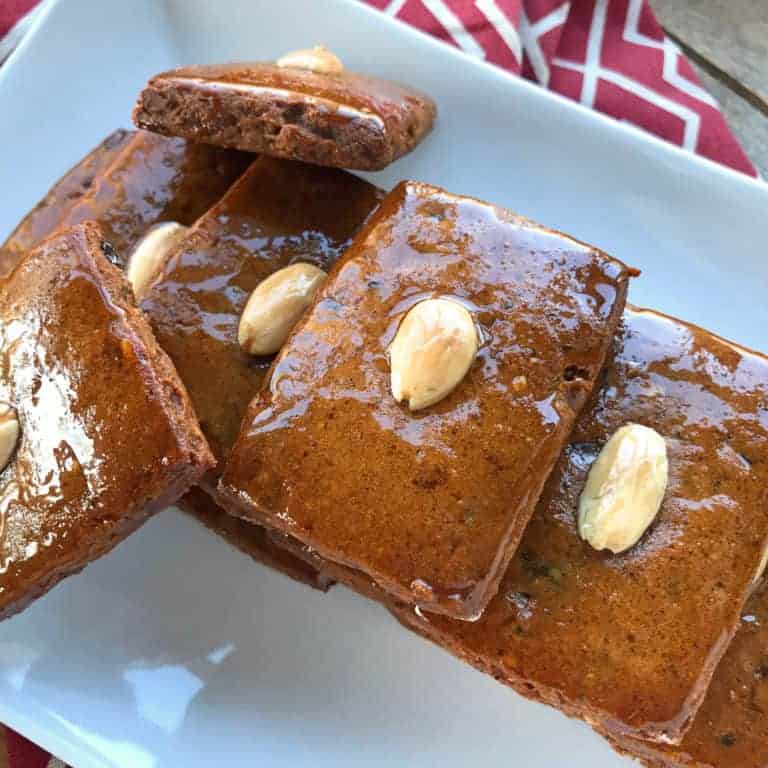
The city of Aachen, Germany is famous for at least a couple of reasons. It was the seat of Charlemagne’s empire and is home to a UNESCO heritage site, the Aachener Cathedral, where Charlemagne is buried. It was a popular pilgrimage for centuries and remains so today. But it’s also famous for one of Germany’s most popular varieties of Lebkuchen (gingerbread) known as Aachener Printen. In fact the two commonly go hand in hand: Tourists visiting the cathedral will often stop by a bakery or cafe to enjoy the city’s world famous Printen.
What are Printen?
Aachener Printen are a type of German gingerbread that are richly spiced, have a deep caramel-like flavor notes, and a hard texture. The standing joke is that Aachener printen are so hard that the bakers have a standing contract with the city’s dentists! Printen are characteristically hard because they’re a very low-moisture cookie: They contain no eggs, fat, milk, virtually no water, and contain three types of sugar which caramelize during baking.
Aachen is so proud of these cookies that they have become safeguarded with a DOP designation (Protected Designation of Origin), which means that commercially-sold Aachener Printen can only be made in the city of Aachen. It’s estimated that Aachen’s bakers produce more than 4,500 tons of Printen every year. That’s 9 million pounds!
Traditionally Aachener Printen were shaped in wooden molds in the designs of saints and soldiers in a similar tradition to Belgian Speculoos (Belgium is where Printen are thought to have originated prior to the 15th century) but for many generations now are most commonly simply cut into rectangles, though more elaborate designs can still be found.
Originally the Printen were sweetened with American wildflower honey which was exported from the U.S. to England and from England to Germany. Centuries ago Printen were actually often sold in Aachen’s pharmacies because with their combination of honey, spices and herbs were thought to have medical benefits! However in 1809 Napoleon banned all trade with the United States. German bakers had to improvise, which led to the creation of sugar beet syrup and that has remained the sweetener of choice for Printen ever since.
What Is Potash and Baker’s Ammonia?
Authentic German Printen recipes call for a combination of what’s called Hirschhornsalz (baker’s ammonia) and Pottasche (potash). That’s ammonium carbonate and potassium carbonate, both of which were used as leavening agents before baking powder and baking soda came along. Baking soda is a suitable substitute for potash. However, while baking powder is what’s commonly called for a substitute for the baker’s ammonia, it will not yield the same results.
As I discuss in my recipes for authentic German Springerle and traditional Speculoos, baker’s ammonia has a very unique effect on the baked goods. As the Printen are baking, the tiny crystals in the baker’s ammonia break down and leave behind tiny air pockets in the crumb, creating a honey-combed, porous crumb that gives otherwise rock hard baked goods a more delicate, crispier and crunchier texture. You will not get this effect with baking powder.
Sugar Beet Syrup, Corn Syrup, Molasses, or Golden Syrup – What To Use?
Printen are made with an ingredient known in German as Zuckerrübensirup. That translates to “sugar beet syrup”. For whatever reason you cannot find sugar beet syrup in the U.S.. Consequently virtually all recipes in the U.S. call for dark corn syrup as a substitute, which is absolutely not the same thing. They’re made from different plants and have a significantly different flavor.
The best substitute I have found is a combination of light molasses and British golden syrup. (Not to be confused with the American brand Golden Eagle Syrup which is a blend that includes corn syrup and high fructose corn syrup.) Do not use dark or blackstrap molasses as the flavor is more bitter and overpowering. Using of 50/50 blend of light molasses and golden syrup is a suitable substitute for the fruity and caramel-like flavor of sugar beet syrup.
Check out our recipe for Homemade Golden Syrup.
But if you can possibly find it, we strongly recommend using German sugar beet syrup. You can find German imported Grafschafter Sugar Beet Syrup on Amazon.
What Is Brown Rock Sugar?
Another ingredient called for in traditional Aachener Printen is brauner Kandiszucker and is often referred to as German or Belgian brown rock sugar. Brown rock sugar is brown cane sugar that has been melted down and crystallized into semi-translucent chunks. It is commonly used as a sweetener for tea and has a deep, rich flavor with hints of caramel. I picked up several bags of it this summer when we went to Belgium and you can also find brown rock sugar on Amazon.
Don’t be tempted to omit this traditional ingredient.
The inclusion of brown rock sugar in the Printen (which are smashed before adding them) means that each bite results in a delightful explosion of tiny sugar crystals.
Two Things We STRONGLY Recommend Making Yourself:
For the very best flavor results we strongly recommend using Homemade Candied Orange Peel.
It’s easy to make and trust us, it makes ALL the difference! All of our readers who have made and used it for our other recipes agree.
The other ingredient we strongly recommend you make yourself: Homemade German Lebkuchengewürz.
This traditional German gingerbread spice blend is what gives these and other Lebkuchen recipes their characteristic flavor. Not only is store-bought authentic German Lebkuchengewürz very difficult to find in the U.S., its flavor (having sat in the package for who knows how long) cannot come close to competing with the robust and vibrant flavor of freshly toasted and ground spices in our homemade blend.
You are now equipped with all of the ingredients you’ll need.
You are now ready to make these world famous traditional Aachener Printen!
Aachener Printen Recipe
Let’s get started!
Place the brown rock sugar in a thick ziplock bag and use a meat mallet or similar to pound and crush the sugar into tiny crystals. Set aside until ready to use.
In a large mixing bowl, combine the flour, lebkuchengewürz, ground anise, baker’s ammonia, baking soda and salt.
In a small saucepan heat the sugar beet syrup and brown sugar until the brown sugar is completely dissolved. Let it cool down a bit.
Pour the syrup mixture into the bowl of a stand mixer and add the candied orange peel.
Add the flour mixture and the crushed brown rock sugar.
Using the paddle attachment, mix the ingredients until fully combined. The dough will be soft and pliable but not sticky. If the dough is very sticky add a little more flour. If the dough is too dry, add a tiny bit of water.
If you don’t have a stand mixer you can stir and then knead this by hand.
Form the dough into a flattened 1-inch thick disk, wrap really well in plastic wrap and let the dough rest in a cool place (NOT IN THE FRIDGE) for 24-48 hours.
Roll the dough out onto a non-stick surface (I use plastic wrap) to about 1/4 inch or 5mm thickness. If the dough is too sticky knead in a little more flour.
At this point you can either press the dough into lightly floured wooden molds, invert the molds and cut out the designs (using the scraps to make more Printen), or you can cut the dough into small rectangles.
Place the Printen on a lined cookie sheet and place a whole blanched almond on top (or however you’d like to design them).
At this point you can either bake them immediately or you can glaze them. For the glaze you can either brush the cookies with a little milk before baking them to create a sheen OR you can bake the cookies first and brush them while they’re still hot with a glaze made from half sugar beet syrup/half water and let them sit to dry, then store them in an airtight container (they may still be a little sticky).
Another option is to coat or dip them in chocolate after they’re baked and fully cooled. You can add one or more whole blanched almonds while the chocolate is still wet or cover them in sliced or slivered almonds.
In an oven preheated to 350 F bake the Printen for 12-18 minutes until lightly browned.
Properly stored in an airtight container in a cool place, Aachener Printen will keep for several months and their flavor only gets better with time.
Enjoy!
For more incredible German goodies, be sure to try our Authentic German:
- Stollen
- Springerle
- Zimtsterne
- Pfeffernüsse
- Lebkuchen
- Marzipan
- Kokosmakronen
- Gugelhupf
- Bethmännchen
- Heidesand
- Magenbrot
- Marzipankartoffeln
- Haselnussmakronen
- Kinderpunsch
as well as our Austrian Vanillekipferl, Linserkekse, Kaiserchmarrn and Apple Strudel!
Save This Recipe
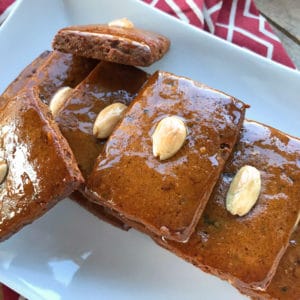
Authentic Aachener Printen
Ingredients
- 3/4 cup (250 g) Graftschafter Sugar Beet Syrup *strongly recommended but see blog post for info about suitable substitute
- 1/3 cup (75 g) firmly packed brown sugar
- 1 tablespoon water
- 3 1/2 ounces (100 g) German or Belgian brown rock sugar , pounded and crushed into tiny crystals
- 1 1/2 ounces (40 g) homemade candied orange peel , very finely chopped (homemade STRONGLY recommended, it's easy and it makes ALL the difference! Click blue link for recipe)
- 2 cups (260 g) all-purpose flour
- 2 1/2 tablespoons homemade Lebkuchengewürz
- OR storebought Lebkuchengewürz (we STRONGLY recommend homemade for the best flavor results, click blue link above for recipe)
- 1/2 teaspoon baker's ammonia *see blog post for explanation
- 1/2 teaspoon baking soda
- 1/2 teaspoon ground aniseed
- 1/4 teaspoon salt
Instructions
- In a large mixing bowl, combine the flour, lebkuchengewürz, ground anise, baker's ammonia, baking soda and salt. Set aside until ready to use.
- In a small saucepan heat the sugar beet syrup and brown sugar until the brown sugar is completely dissolved. Let it cool down a bit.
- Pour the sugar beet syrup into the bowl of a stand mixer and add the candied
orange peel.Add the flour mixture and the crushed brown rock sugar.Using the paddle attachment, mix the ingredients until fully combined.
The dough will be soft and pliable but not sticky. If the dough is very
sticky add a little more flour. If the dough is too dry, add a tiny bit
of water.If you don't have a stand mixer you can stir and then knead this by hand.Form the dough into a flattened 1-inch thick disk, wrap really well in
plastic wrap and let the dough rest in a cool place (NOT IN THE FRIDGE) for
24-48 hours. - Roll the dough out onto a non-stick surface (I use plastic wrap) to about
1/4 inch or 5mm thickness. If the dough is too sticky knead in a little
more flour.At this point you can either press the dough into lightly floured wooden
molds, invert the molds and cut out the designs (using the scraps to make more
Printen), or you can cut the dough into small rectangles.Place the Printen on a lined cookie sheet and place a whole blanched almond
on top (or however you'd like to design them).At this point you can either bake them immediately or you can glaze
them. For the glaze you can either brush the cookies with a little milk
before baking them to create a sheen OR you can bake the cookies first and
brush them while they're still hot with a glaze made from half sugar beet
syrup/half water and let them sit to dry, then store them in an airtight
container (they may still be a little sticky).Another option is to coat or dip them in chocolate after they're baked and
fully cooled. You can add one or more whole blanched almonds while the
chocolate is still wet or cover them in sliced or slivered almonds. - In an oven preheated to 350 F bake the Printen for 12-18 minutes until
lightly browned. - Once cooled completely, store them in an airtight container. Properly stored in an airtight container in a cool place, Aachener Printen will keep for several months and their flavor only gets better with time.

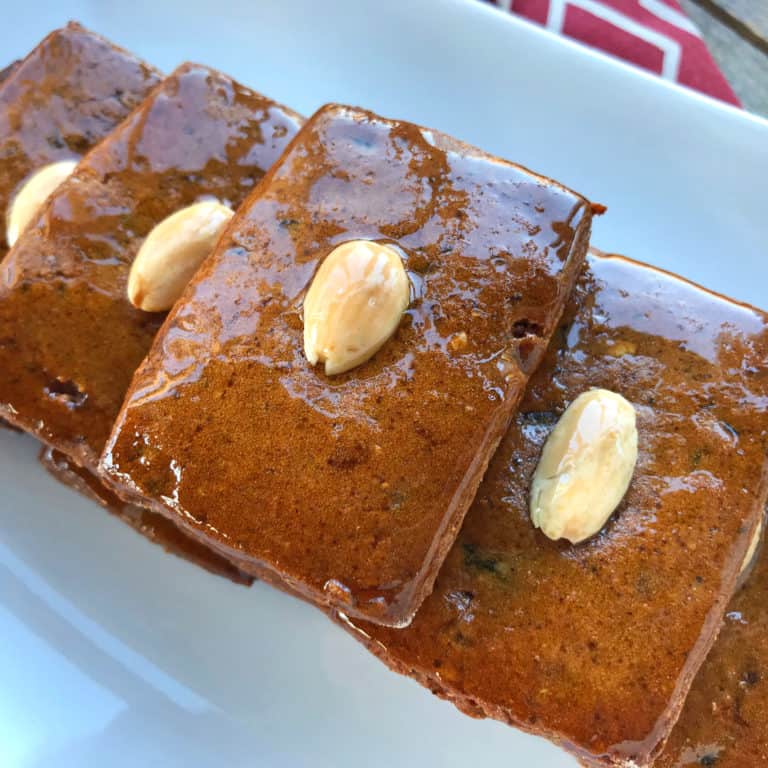
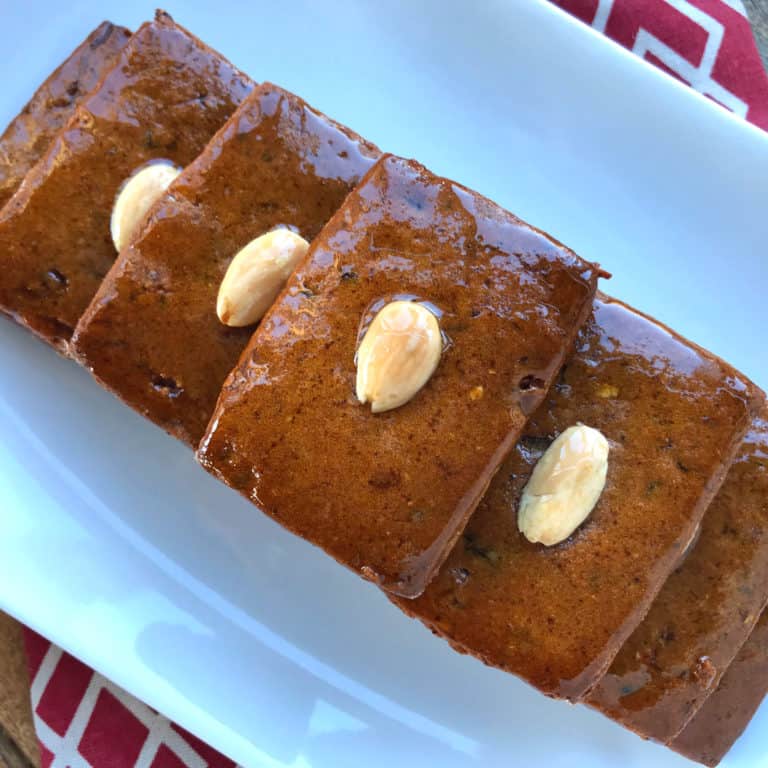
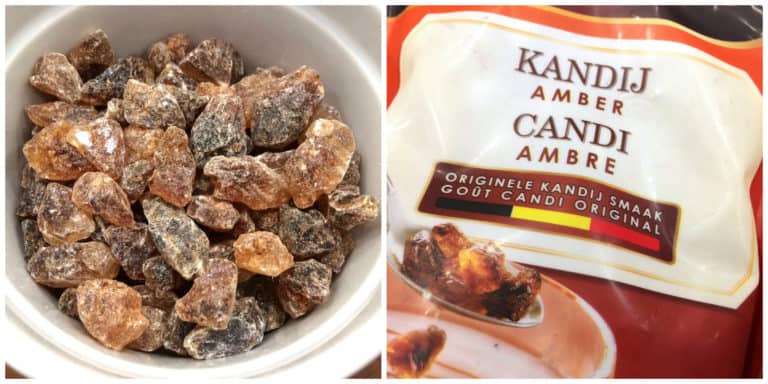
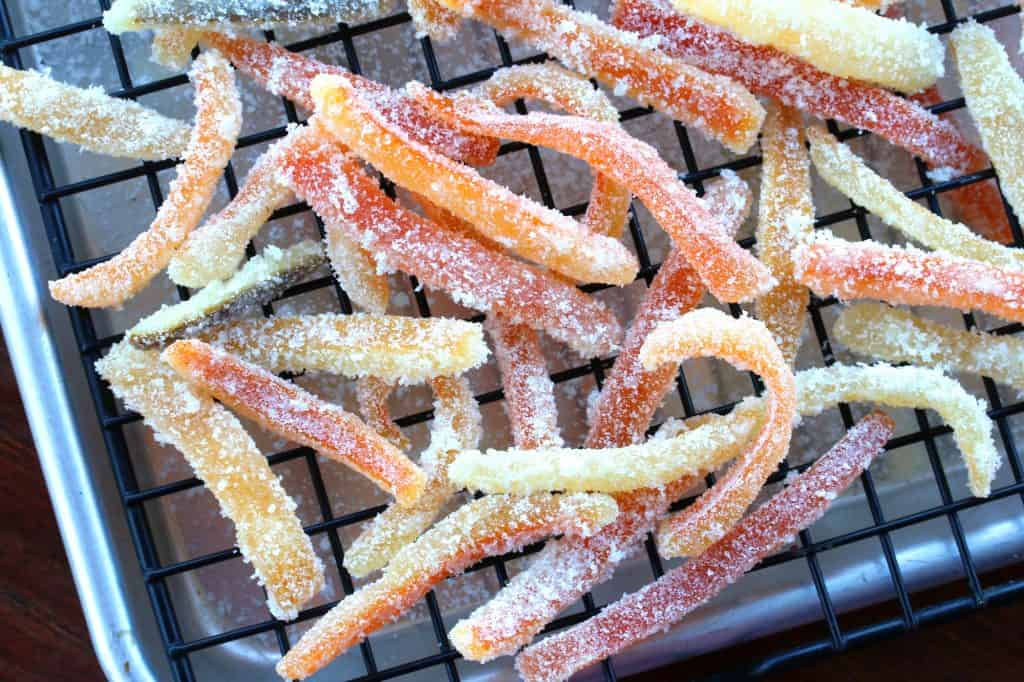
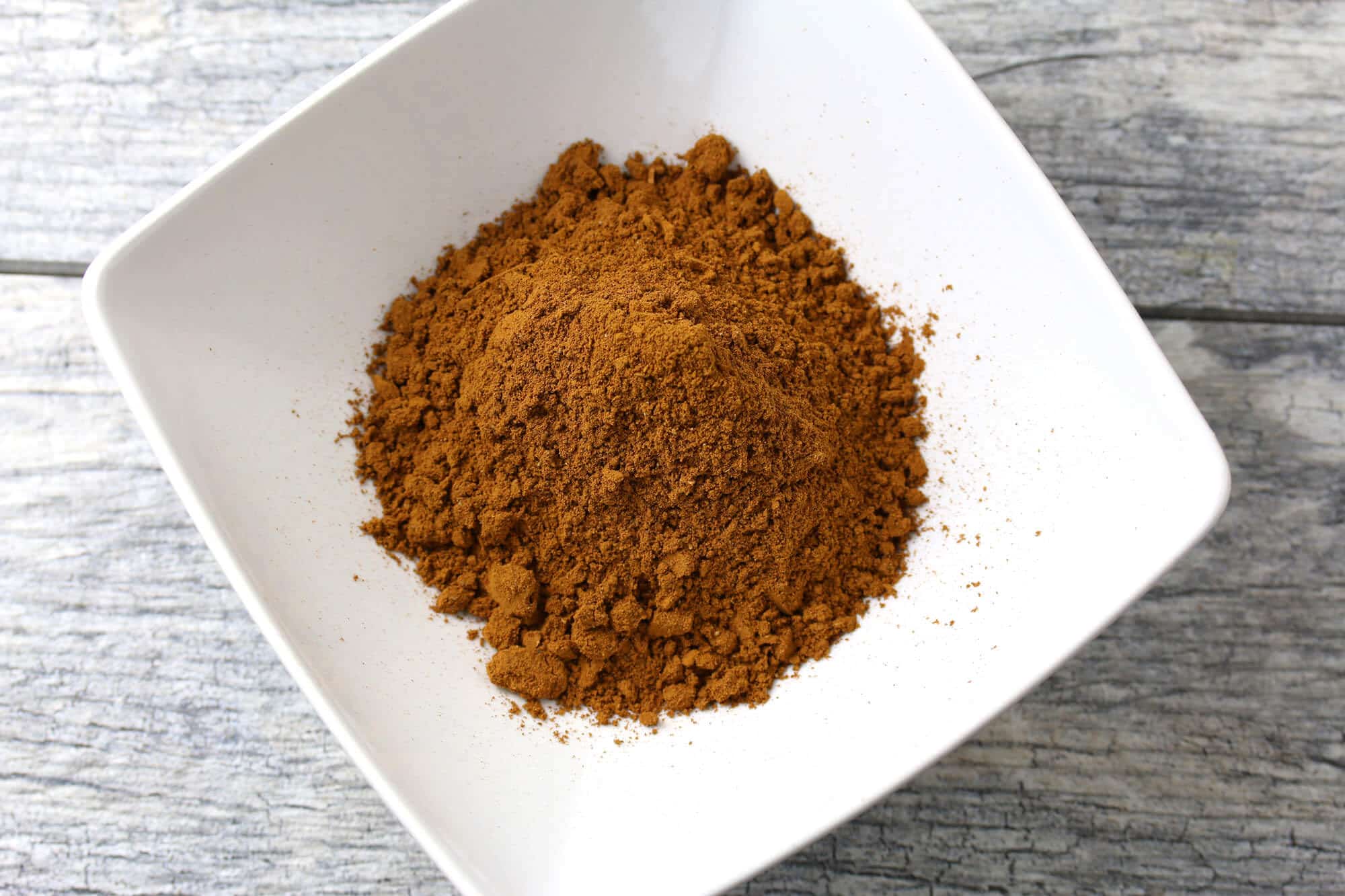
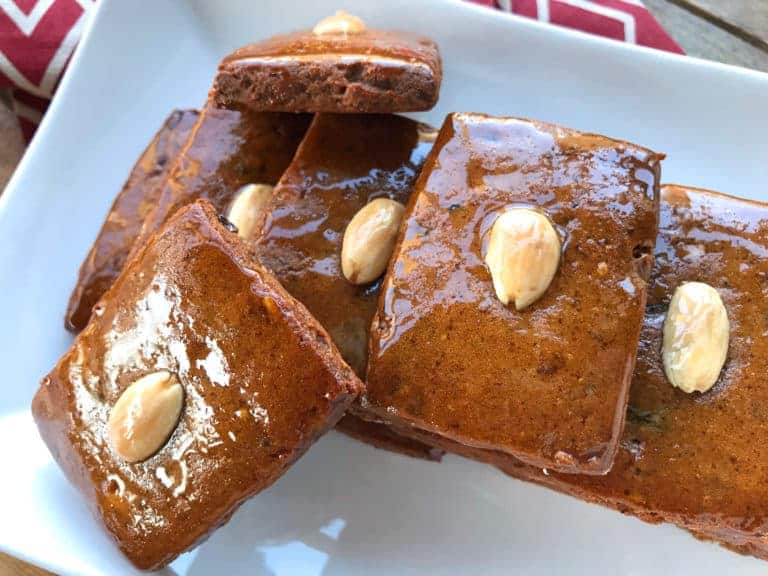
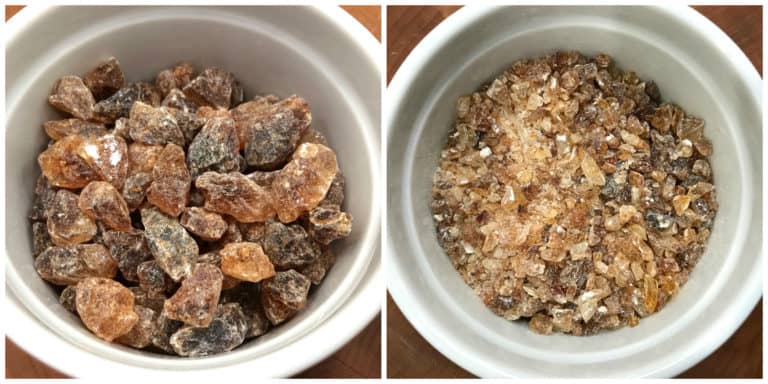
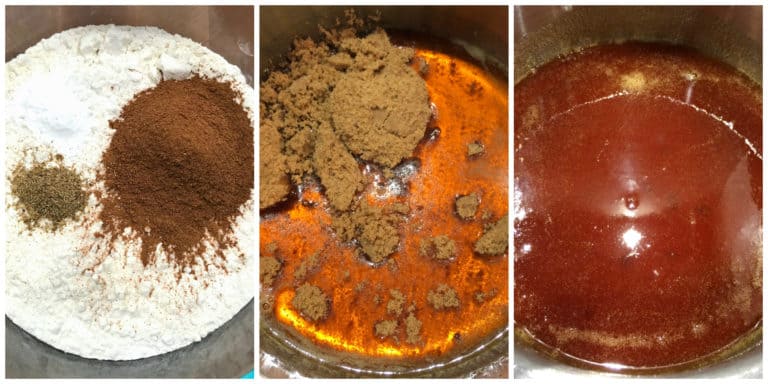
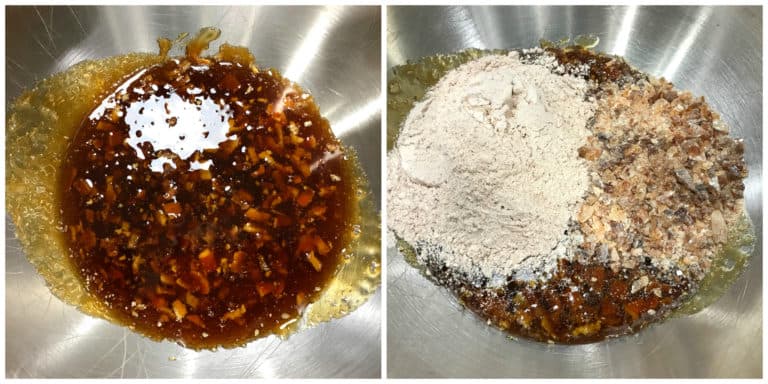
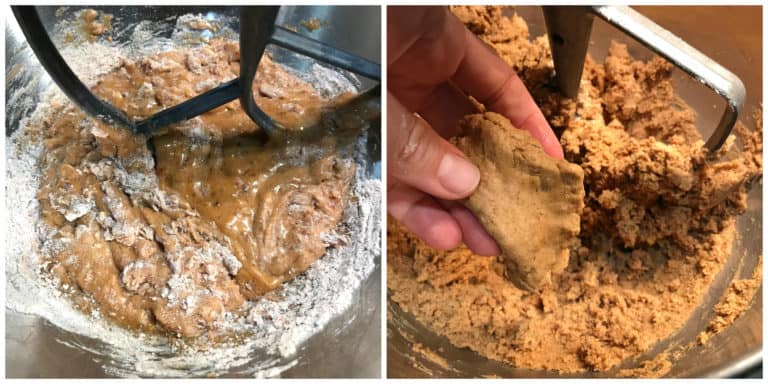
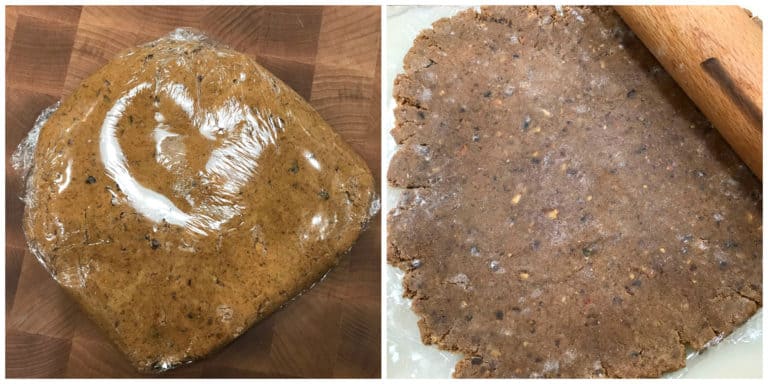
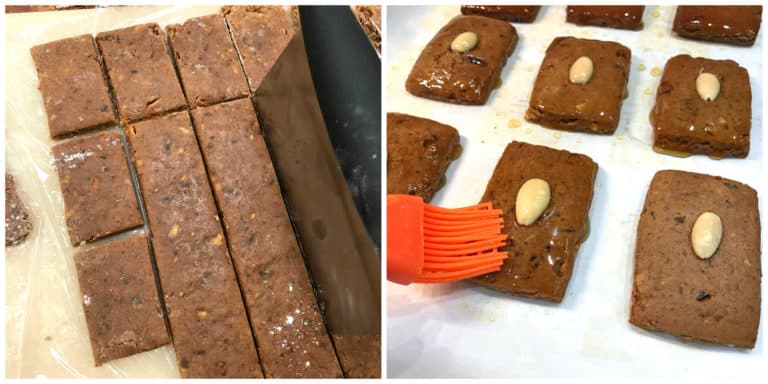
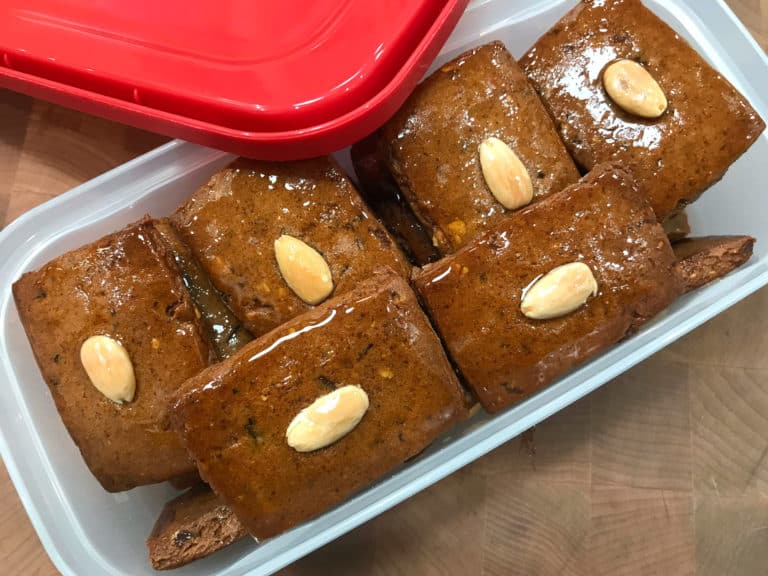



















This is the recipe I always use, and it’s very good (with substitutes and with the original ingredients)!
That’s wonderful, Ori, I’m so happy this has become a regular, thank you!